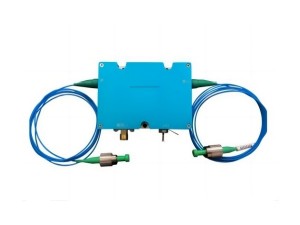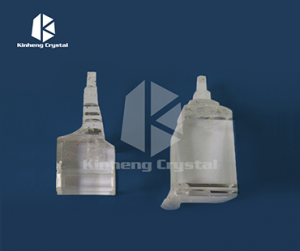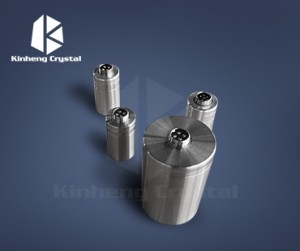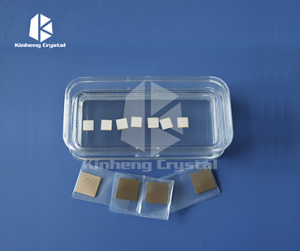LSAT Substrate
Description
(La, Sr) (Al, Ta) O 3 is a relatively mature non-crystalline perovskite crystal, which is well matched with high temperature superconductors and a variety of oxide materials. It is expected that lanthanum aluminate (LaAlO 3) and strontium titanate (SrO 3) will be replaced in giant magnetoelectrics and superconducting devices in a large number of practical applications.
Properties
| Growth Method |
CZ growth |
| Crystal System |
Cubic |
| Crystallographic Lattice Constant |
a= 3.868 A |
| Density(g/cm3) |
6.74 |
| Melting Point(℃) |
1840 |
| Hardness (Mho) |
6.5 |
| Thermal Conductivity |
10x10-6 K |
LaAlO3 Substrate Definition
LaAlO3 substrate refers to a specific material used as a substrate or base in scientific and technological applications for growing thin films of various other materials. It consists of the crystalline structure of lanthanum aluminate (LaAlO3), which is commonly used in the field of thin film deposition.
LaAlO3 substrates have properties that make them desirable for growing thin films, such as their high crystalline quality, good lattice mismatch with many other materials, and ability to provide a suitable surface for epitaxial growth.
Epitaxial is the process of growing a thin film on a substrate in which the atoms of the film align with those of the substrate to form a highly ordered structure.
LaAlO3 substrates are widely used in fields such as electronics, optoelectronics, and solid-state physics, where thin films are critical for various device applications. Its unique properties and compatibility with many different materials make it an important substrate for research and development in these fields.
High-temperature Superconductors Definition
High-temperature superconductors (HTS) are materials that exhibit superconductivity at relatively high temperatures compared to conventional superconductors. Conventional superconductors require extremely low temperatures, typically below -200°C (-328°F), to exhibit zero electrical resistance. In contrast, HTS materials can achieve superconductivity at temperatures as high as -135°C (-211°F) and above.











